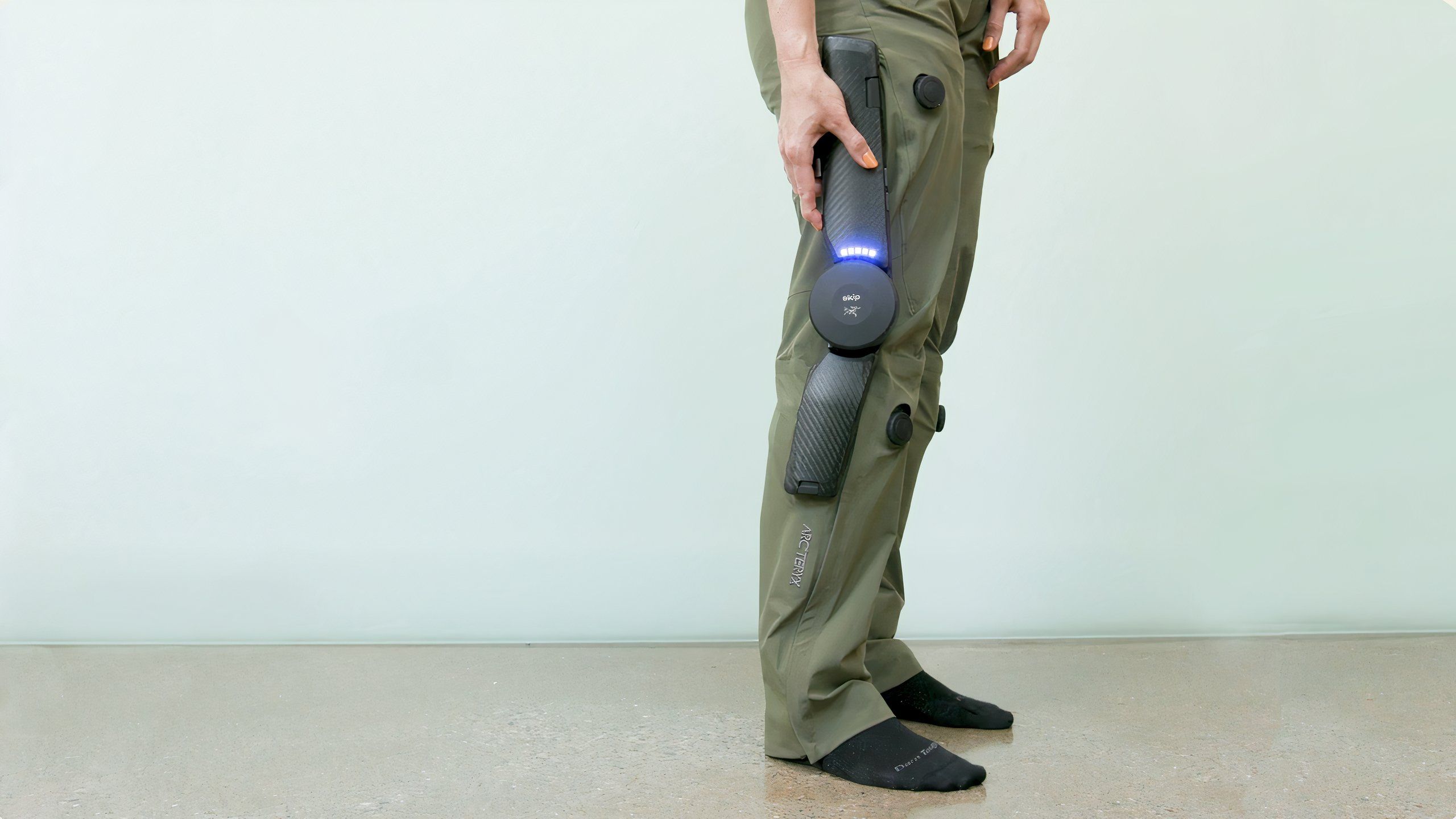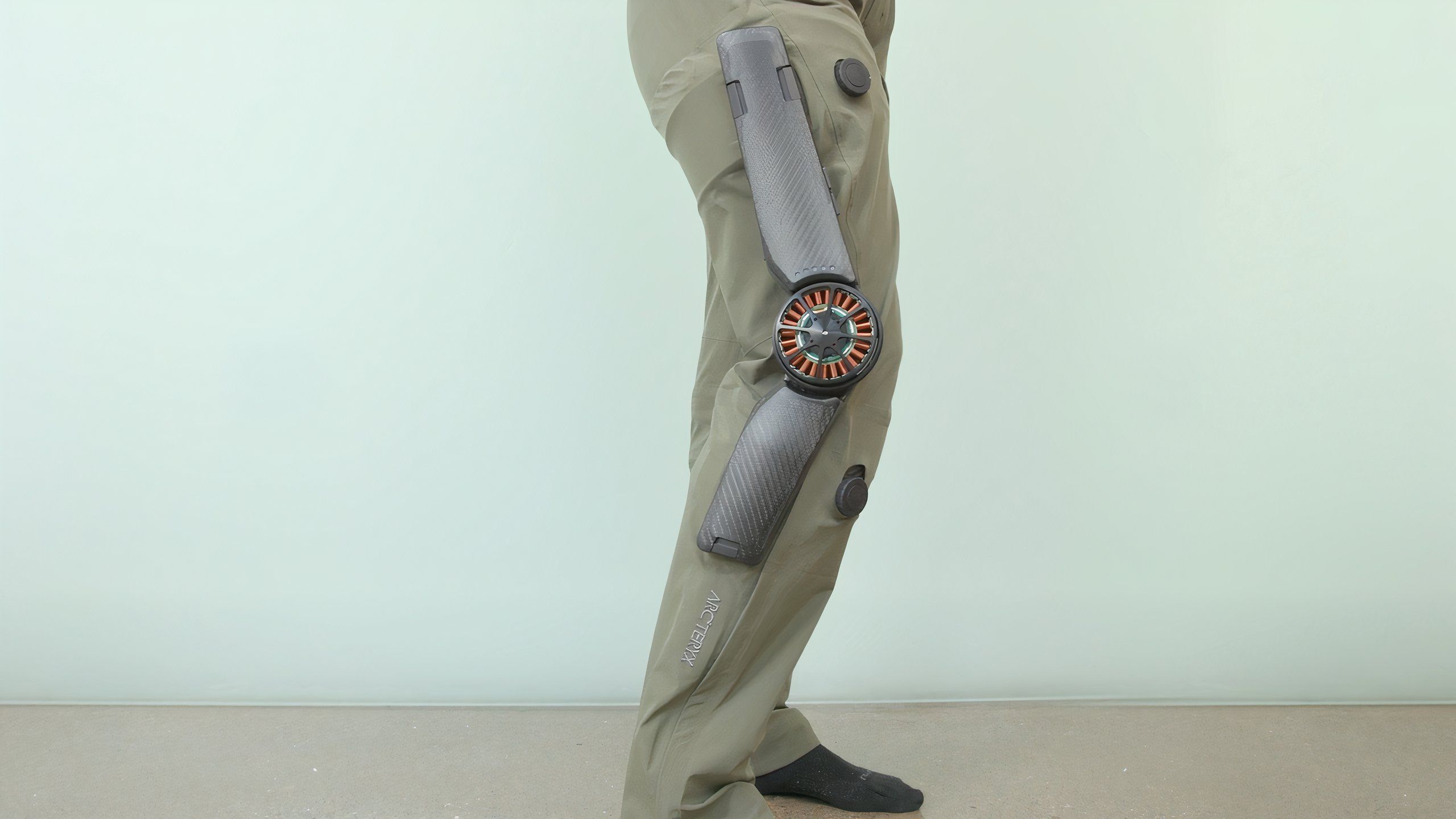Key Takeaways
- The MO/GO exoskeleton pants from Arc’teryx and Skip improve hiking, making you feel lighter and boosting uphill performance.
- The exoskeleton uses motors and machine learning to assist your walking uphill and protect your joints downhill.
- Despite a high cost and limited battery life, MO/GO offers a glimpse into future possibilities for exoskeleton technology.
Exoskeletons are still primarily imagined as a way to restore paraplegics’ mobility and make physically demanding jobs less dangerous, but if you’re willing to spend around $5,000, you can get a taste of one right now. MO/GO, a pair of exoskeleton-aided pants from Arc’teryx and Skip, a former part of Google’s X, aren’t focused on the usual healthcare or enterprise uses for exoskeletons and instead something much simpler — making walking and hiking more accessible.
While most wearables you can buy are focused on providing information you might not already have, or letting you capture things in a way you might not normally be able to, these pants change what you’re physically capable of. That kind of functionality doesn’t come cheap. For the not-so-trivial costs of either a $5,000 purchase ($4,500 if you’re willing to put down a $99 deposit today) or an $80 eight-hour rental, the MO/GO quite literally lightens your load walking uphill and makes the downhills easier on your knees, all while looking mostly like a classy pair of Arc’teryx pants. Here’s how these exoskeleton pants work, and how Skip imagines they’ll be used.
Related
Apple Maps’ iOS 18 upgrades go beyond hiking
Although Apple primarily focused on Apple Maps’ new hiking features, they’ll actually extend to all on-foot travel.
How MO/GO makes hiking easier
Like an e-bike for walking
Skip / Pocket-lint
The MO/GO is essentially made up of two main parts, a pair of Arc’teryx’s Gamma pants, redesigned to accommodate and organize all the different exoskeleton movement and battery components, and the Skip exoskeleton itself, made of light, carbon fiber cuffs that wrap around your legs inside the pants, and frames, motors, and a battery that clip on to the outside. All-in-all, the MO/GO is more Death Stranding than Wallace & Grommit’s The Wrong Trousers, which is to say, either way, you’ll look a little goofy wearing them.
The MO/GO is able to make users feel 30lbs lighter while walking, and in general, it’s supposed to boost your walking uphill by up to 40%, according to Skip. While making your way downhill, the exoskeleton’s assistance is supposed to make all that walking easier on your knees and joints. That help doesn’t come without some drawbacks. Namely, you’re not necessarily getting an all-day battery life with the MO/GO.
Skip writes that the current battery is designed to give wearers “3 hours of intense uphill walking at maximum assistance on a single charge,” and that a MO/GO currently comes with extra battery. Even with more than one battery, you still might not get a multi-week backpacking trip out of the MO/GO, but it can at least use downhill movement to charge the exoskeleton’s battery.
Motors and machine-learning
Skip / Pocket-lint
Skip makes the whole system work by essentially using the MO/GO’s knee-mounted motors to both augment the power of your quadriceps and hamstrings while walking uphill, and absorb the impact stepping has on your joints when you walk downhill. Software built into the exoskeleton (and “trained on the biggest mountains in the world”) is supposed to adjust the motor to your gait and level of activity to apply more or less force, though you can ask for more or less assistance with a button press too.
Based on the hands-on Fast Company received, the experience of actually walking in the MO/GO doesn’t sound quite as comfortable as normal walking — using the pants was described as feeling like “a little bar shoved from below my upper hamstrings” — but it does seem like the exoskeleton does a good job of making more strenuous hikes easier, which was the goal from the beginning.
Your first chance at wearing an exoskeleton
With the limited battery and high price, MO/GO clearly isn’t for everyone, but it is an exciting example of how research into robotics is opening up a whole new kind of gadget. It seems much more likely we’ll get exoskeletons that augment our performance in our lifetime than a humanoid robot that outright replaces human workers. If you want to see how that feels, you can spend $5,000 and find out sometime in December 2025, according to Skip’s current order page.
Trending Products

Cooler Master MasterBox Q300L Micro-ATX Tower with Magnetic Design Dust Filter, Transparent Acrylic Side Panel, Adjustable I/O & Fully Ventilated Airflow, Black (MCB-Q300L-KANN-S00)

ASUS TUF Gaming GT301 ZAKU II Edition ATX mid-Tower Compact case with Tempered Glass Side Panel, Honeycomb Front Panel…

ASUS TUF Gaming GT501 Mid-Tower Computer Case for up to EATX Motherboards with USB 3.0 Front Panel Cases GT501/GRY/WITH Handle

be quiet! Pure Base 500DX ATX Mid Tower PC case | ARGB | 3 Pre-Installed Pure Wings 2 Fans | Tempered Glass Window | Black | BGW37

ASUS ROG Strix Helios GX601 White Edition RGB Mid-Tower Computer Case for ATX/EATX Motherboards with tempered glass, aluminum frame, GPU braces, 420mm radiator support and Aura Sync

CORSAIR 7000D AIRFLOW Full-Tower ATX PC Case â High-Airflow Front Panel â Spacious Interior â Easy Cable Management â 3x 140mm AirGuide Fans with PWM Repeater Included â Black











